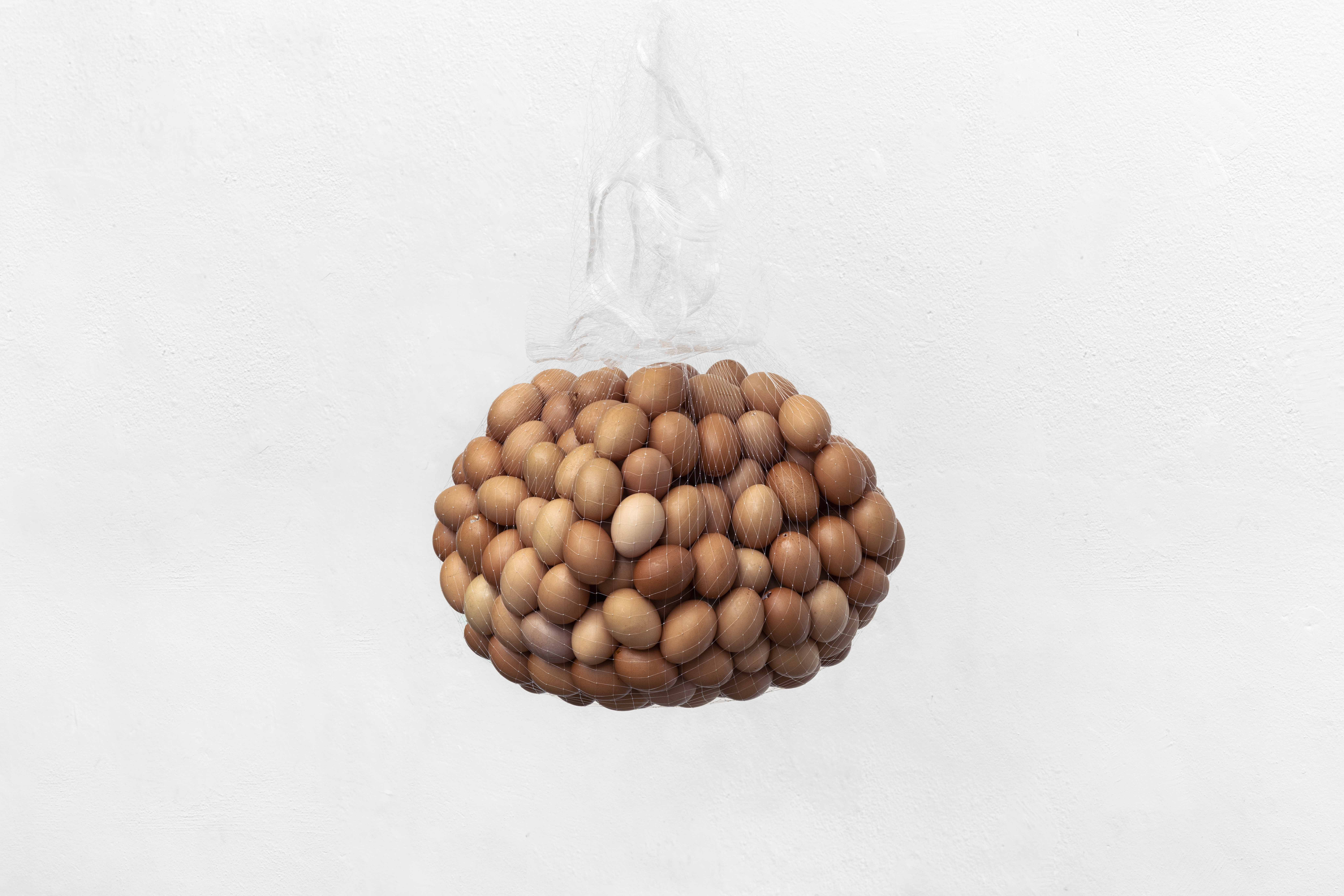
Alvéolo recria uma espécie de balança, que funciona em um mecanismo de trilho. No trabalho, o peso de um bloco de gelo contrapõe-se ao peso dos saco de ovos esvaziados pelo sopro, posicionados na altura de um pulmão humano.
A palavra alvéolo significa tecido ou órgão oco; no nosso corpo indica uma estrutura que possui a forma de pequenas cavidades com paredes vascularizadas, revestidas pelas membranas alvéolo-capilares, que permitem as trocas gasosas entre o ar do meio ambiente e o sangue do organismo. A junção dos alvéolos cria os sacos alveolares, responsáveis pelo aspecto esponjoso dos pulmões, que permitem o flutuar na água.
O bloco de gelo lentamente derrete na bandeja posicionada no chão, alagando o piso e determinando o tempo do sistema de balanceamento. Assim, o peso dos ovos vazios supera o peso da bandeja de água, trocando um momento de suspensão por outro.
Alveolus creates a scale, a balancing act destined to reverse itself. The weight of an ice pack is opposed to the weight of a sack of eggs, with each egg already emptied. The scale ultimately replicates the hanging structure of the human respiratory system.
The word alveolus means hollow tissue or organ; in our body it indicates a structure that takes the form of small cavities with vascularized walls, covered by the alveolus-capillary membranes, which allow gases to exchange between the air of the environment and our blood. The joining of the alveoli creates the alveolar sacs, which are responsible for the spongy aspect of the lungs, which allow them to float in water.
The ice block gradually melts inside a tray, flooding the floor and determining the timescale of the balancing system. Thus, the weight of the empty eggs exceeds the weight of the water tray, exchanging one moment of suspension for another.

Alvéolo, 2019
ovos soprados e gelo
dimensões variáveis
Alveolus, 2019
blown eggs and ice
variable dimensions



Foto|Photo: Julia Thompson